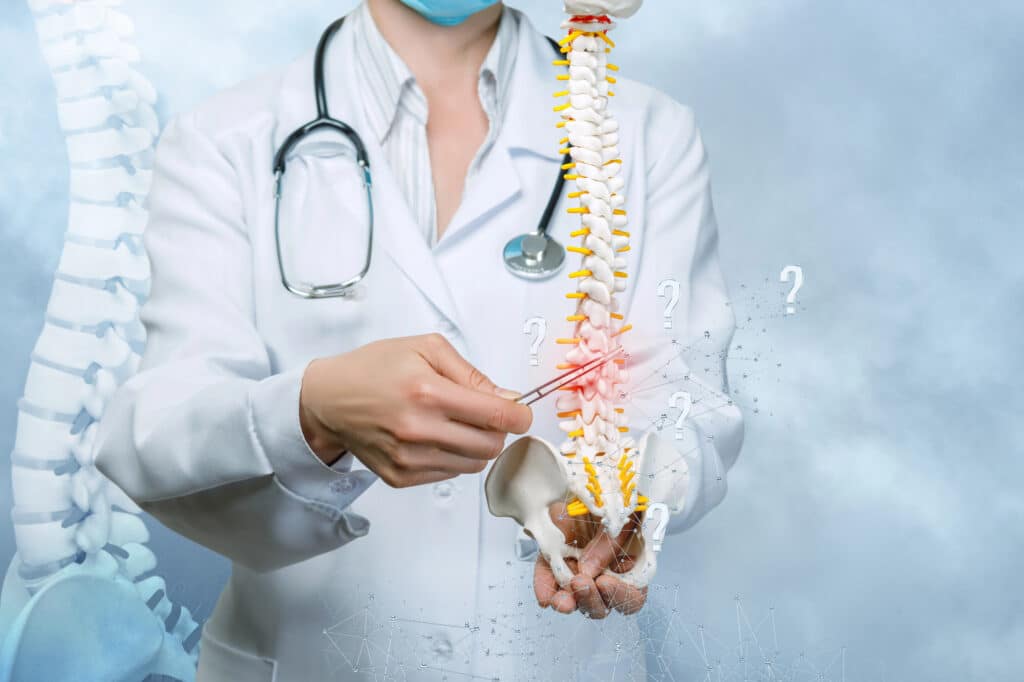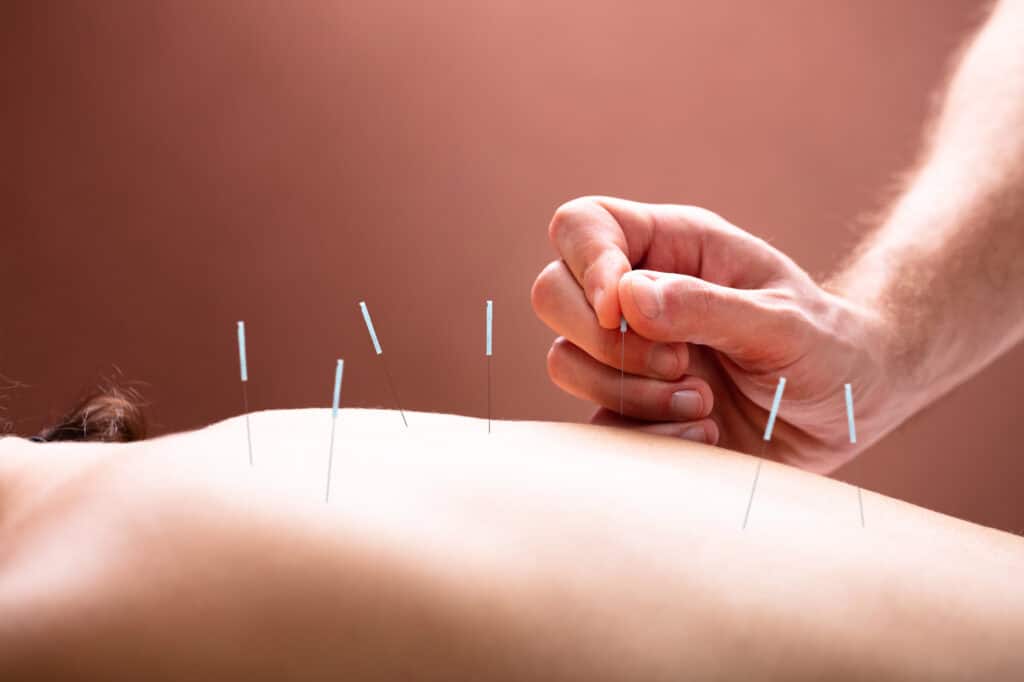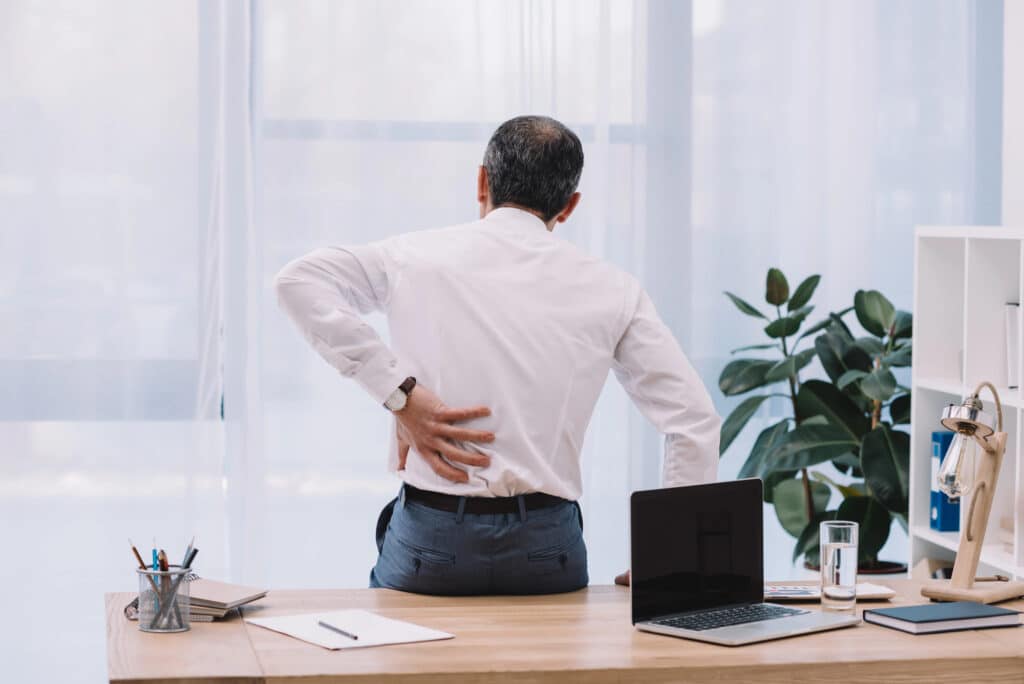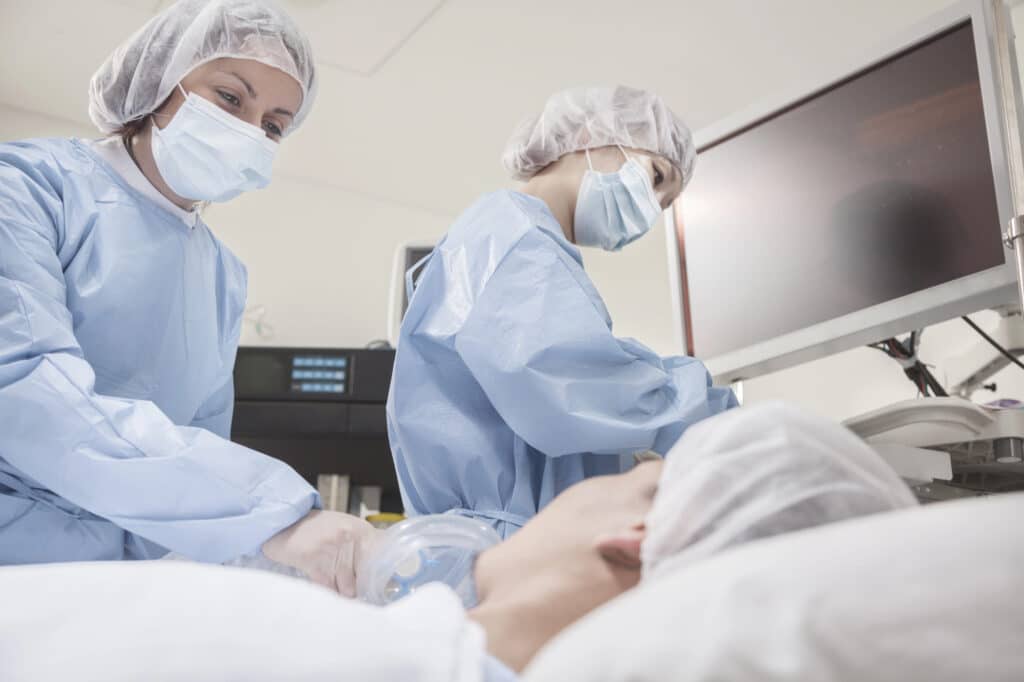It’s estimated that 40% of adults in the U.S. are living with back or neck pain at any given moment in time. While the most severe of these approximately 103.3 million cases may require surgical intervention, the vast majority will resolve without it—either on their own or with the aid of a conservative treatment approach. At the New Jersey Spine Institute, our leading team of Board-Certified spine specialists is committed to exploring all conservative treatment methods before recommending spine surgery, whenever possible. In fact, more than 90% of our patients achieve significant pain relief without ever undergoing a surgical procedure.
Below, we’ve provided an introduction to back and neck pain prevention and diagnosis, as well as an overview of some of the non-surgical treatment options we draw on in the development of personalized care plans for our patients. These include lifestyle modifications, physical therapy, alternative therapies, and pain management techniques, many of which are offered on-site at our state-of-the-art clinic.
Could conservative, non-surgical treatments provide an effective alternative to spine surgery based on your particular needs and situation? Schedule an initial consultation with our world-class team to receive an accurate diagnosis and learn more.
Preventative Measures To Avoid Back & Neck Pain
When back or neck pain occurs, the specialists at the New Jersey Spine Institute possess the training, experience, and expertise to put patients on the quickest road to a full and complete recovery. With proper preventative care, however, back and neck pain may never develop in the first place.
While not all injuries or conditions are preventable, the following tips can help you keep your spine in optimal health over the long term:
- Maintain Excellent Posture – Whether standing or sitting, keep your spine tall, shoulders back, head up, and eyes forward.
- Stretch & Strengthen Regularly – A daily routine that includes gentle stretches for the spine and neck as well as core strengthening helps contribute to the healthiest spine possible.
- Remain Physically Active – Engaging in moderate physical activity for approximately 30 minutes per day can reduce the chances of developing chronic back or neck pain over time.
- Use Proper Equipment & Techniques – When lifting heavy objects or performing repetitive tasks, ensure that you are using proper techniques and/or equipment.
- Maintain A Healthy Weight – Carrying excess weight can put extra pressure on the joints, including those in the neck and spine.
- Stop Smoking – Smoking damages blood vessels, which can lead to the development of disc and joint issues in the spine. It also contributes to osteoporosis, which can impact the vertebral bones.
- Stay Hydrated – Drinking enough water keeps intervertebral discs hydrated and spinal joints lubricated.
- Get Enough Sleep – Sleep is associated with the repair and restoration of spinal structures as well as muscle relaxation and the reduction of pain and inflammation.
- Reduce Stress – Stress can contribute to pain and inflammation. Mindfulness and relaxation techniques may help mitigate discomfort.
Diagnostic Procedures For Back & Neck Pain

When back and neck pain do occur, an accurate diagnosis is essential. At the New Jersey Spine Institute, our exceptional spine doctors are dedicated to pinpointing the underlying causes of chronic pain in order to develop personalized treatment plans custom-tailored to the needs and goals of each patient.
Physical Examination & History
At the New Jersey Spine Institute, every diagnostic process begins with the gathering of a detailed medical history and the performance of an in-depth physical examination. One of our Board-Certified spine doctors will take careful note of your symptoms and may also visually inspect and/or palpate the affected area. In addition, various strength, sensation, and range of motion tests may be conducted.
Imaging Techniques
Depending on the specifics of your case, your New Jersey Spine Institute doctor may order diagnostic imaging tests to better visualize the affected area, including:
X-Rays – X-rays show bones and the spaces between them. They are often ordered if a fracture or other issue with the structure of the vertebrae is suspected.
CT Scan – A CT scan shows detailed images of bones, muscles, organs, blood vessels, and more.
MRI – An MRI provides images of soft tissues and nerves in the spine.
The New Jersey Spine Institute team will meticulously review your images in order to develop the most comprehensive treatment plan possible. Other diagnostic tests available at our state-of-the-art clinic include discography (discogram) and electromyogram (EMG).
Lifestyle Modifications For Long-Term Pain Relief
Lifestyle modifications are non-invasive, patient-centered, and have the potential to dramatically reduce back and neck pain in many cases. In order to have the greatest possible impact, they require a consistent commitment over time.
At the New Jersey Spine Institute, some of the lifestyle modifications we frequently recommend for our patients include:
Posture & Ergonomics
Ideally, back and neck pain sufferers should aim to maintain proper posture throughout the day, including a straight spine, lifted chest, open shoulders, and gently engaged abdominal muscles. An ergonomic home and/or workspace that is specifically designed to keep bones and joints in proper alignment during daily tasks can help.
For example, sitting at a computer for lengthy periods is a common cause of back and neck pain. An ergonomic workstation helps to ensure that the monitor is centered directly in front of the eyes, arms are bent at a 90-degree angle, feet are flat on the floor, and the ear, shoulder, elbow, and hip are aligned.
Weight Management
Obesity is associated with an increased risk of chronic lower back pain. Maintaining a healthy weight (BMI between 18.5 and 24.9) can relieve pressure on the spine, and eating a balanced diet can contribute to the strength and integrity of bones, muscles, and other spinal structures. At the New Jersey Spine Institute, we recommend eating a nutritious, spine-friendly diet that incorporates:
- Calcium-Rich Foods – These can include dairy products, legumes, leafy greens, and more.
- Anti-Inflammatory Foods – These can include spinach, kale, almonds, pecans, fish, blueberries, avocadoes, and more.
- Plenty Of Water – Staying hydrated is vital to the spine’s flexibility and ability to absorb shocks.
Stress Reduction Techniques
Research has demonstrated a strong correlation between lower back pain and degree of stress. Stress reduction can take many forms including the following:
- Mindfulness and/or meditation practices
- Yoga or Tai Chi
- Cognitive relaxation strategies
- Breathing exercises
- Getting enough sleep
- Eating a healthy, balanced diet
Physical Therapy Techniques

Physical therapy on its own or in combination with other treatment options can support significant pain reduction and the restoration of the spine’s normal movement and function. At the New Jersey Spine Institute, we frequently incorporate this non-surgical treatment approach into care plans where the development of muscle strength, flexibility, and endurance is vital.
In order for physical therapy to have maximum benefit, treatments and exercise programs must be performed with regularity, as recommended by a trained physical therapist. Each patient’s physical therapy treatment plan will reflect their unique condition, symptoms, treatment goals, and comfort level.
Exercise Programs For Back & Neck Pain
Scientific studies have shown that continuing to be physically active within the parameters that back or neck pain allows can lead to a more rapid recovery than immobilization. Movement is essential to the development of spinal tissues and structures that are stronger, more supportive, and resistant to further damage or injury, and physical therapy can help.
Physical therapy facilitates healthy movement within the framework of a controlled and carefully scaffolded treatment plan. Targeted exercise programs often include a combination of stretching, core strengthening, flexibility exercises, posture retraining, manual therapy, and aerobic exercise. Physical stimuli such as heat/cold, electrical currents, and/or ultrasound may also be incorporated.
Manual Therapy
Manual therapy, also known as manipulative therapy, includes hands-on techniques like massage and joint mobilization to relieve pain and improve mobility. Your trained physical therapist should work closely with you to explain the purpose of each manual therapy technique and ensure that you are comfortable and aware of what to expect.
Proprioceptive Re-Education
Proprioceptive re-education helps restore balance and coordination by retraining the body’s sense of position and movement. Often involving balancing exercises, stability exercises, and postural retraining, it helps rebuild the motor control and function necessary for the completion of daily activities and can contribute to pain relief.
Pain Management Options
The goal of treatment at the New Jersey Spine Institute is to address and resolve the root cause of chronic back and neck pain. When pain is constant and debilitating, pain management options can be an essential tool in helping patients experience relief, improve their quality of life, and actively participate in a comprehensive rehabilitation program.
Our experienced team of pain management specialists may recommend one or more of the following pain management approaches based on your symptoms and the specifics of your particular case:
Medication Options
Our team will carefully select medication options to help you safely achieve your pain and mobility goals. These may include non-steroidal inflammatory drugs (NSAIDs), muscle relaxants, or other prescription medications. For specific questions about medication options and non-opioid pain management, speak directly with your New Jersey Spine Institute doctor.
Epidural Steroid Injections
Epidural injections can offer relief from chronic back and neck pain caused by the inflammation of spinal nerves by introducing a combination of anesthetic and anti-inflammatory steroid medication directly into the epidural space between the spinal column and the spinal cord. While interlaminar injections are administered between the flat bone plates of the vertebrae, transforaminal epidural injections are administered via the foramina—the openings in the side of the spine where nerve roots exit the spinal column. Epidural steroid injections may need to be re-administered every few weeks or months, depending on the circumstances.
Nerve Blocks
A nerve block is another injectable treatment option that targets the area near a damaged nerve with local anesthetic. These injections temporarily interrupt pain signals from a specific nerve, providing diagnostic insights and relief.
Alternative Treatments For Back & Neck Pain

While we do not offer alternative treatments for back and neck pain at the New Jersey Spine Institute, we often support our patients in seeking high-quality complementary care, depending on the specifics of their circumstances and treatment goals. Common alternative treatments for back and neck pain include:
Acupuncture
Acupuncture is a complementary pain treatment rooted in traditional Chinese medicine. Sterile needles are inserted at specific points in the skin to open energy pathways and stimulate the body’s natural healing processes.
Chiropractic Care
Chiropractic care focuses on the spine and joints and their connection to the nervous system. Spinal adjustments are administered by hand or with the use of specialized instruments in order to align the spine and body. As with physical therapy, physical stimuli such as heat, ice, electrical stimulation, and/or ultrasound may also be incorporated into chiropractic treatment sessions.
Massage Therapy
Massage therapy can have many benefits for spine and back pain including the release of toxins from muscles, increased circulation, the break-down of scar tissue, the release of endorphins, and the calming of the nervous system. This treatment can also help relieve tension and muscle pain triggered by an underlying spine injury or condition.
Non-Surgical Treatment For Neck Pain
The neck (cervical spine) is composed of seven vertebrae, C1-C7, and is critical in supporting the head, transmitting nervous signals, allowing for movement, and many other functions. When neck pain occurs, patients may have trouble turning the head, bending the neck, rotating the trunk, sleeping, and performing daily tasks and activities. Neck pain may also be associated with radicular pain, weakness, tingling, or numbness that shoots into the arms or shoulders.
Causes Of Neck Pain
Neck pain can be caused by a wide variety of different factors including:
- Arthritis
- Spinal stenosis
- Disc issues
- Traumatic injury
- Muscle tension
- Sleeping position
- Repetitive movements that strain the neck
Pain Management Strategies For Neck Pain
Pain management strategies for neck pain can involve a broad spectrum of different treatment options based on the severity, location, and underlying cause of the pain. For more specifics based on your particular symptoms, book an appointment with the New Jersey Spine Institute team today.
Physical Therapy For Neck Pain
Physical therapy treatment for neck pain is customized to the needs and goals of each individual patient. It often includes exercises that aim to strengthen, stretch, and improve the range of motion in the neck.
Non-Surgical Treatment For Middle Back Pain

Occurring in the thoracic spine, vertebrae T1-T12, middle back pain is less common than cervical (neck) or lumbar (lower back) pain. The thoracic spine is critical in supporting the upper body, protecting the spinal cord and vascular organs, and allowing for movement and flexibility. When injury or damage occurs to the middle back, patients may experience pain that radiates into the arms, legs, or chest as well as difficulty performing movements such as bending and twisting.
Causes Of Middle Back Pain
Middle back pain can be caused by a wide variety of different factors including:
- Spinal conditions, including spinal stenosis
- Repetitive movements, such as heavy lifting
- Bulging or herniated disc(s)
- Degenerative conditions, such as Degenerative Disc Disease or osteoarthritis of the spine
- Poor posture
- Traumatic injury
Pain Management Strategies For Middle Back Pain
Pain management strategies for middle back pain vary widely, depending on the cause, scope, and severity of the condition or injury. Book a consultation at the New Jersey Spine Institute to learn more and receive a treatment plan precisely tailored to your needs and goals.
Physical Therapy For Middle Back Pain
Physical therapy treatment for middle back pain can involve a range of exercises and techniques modified and targeted to the thoracic spine.
Non-Surgical Treatment For Lower Back Pain
Lumbar pain stems from the five vertebrae in the lower back, L1-L5. Characterized by pain and/or stiffness that may radiate into the buttocks or legs, it can impact the ability to move, bend, twist, and perform daily tasks and activities.
Causes Of Lower Back Pain
Lower back pain can be caused by a wide variety of different factors including:
- Disc issues, such as a bulging or herniated intervertebral disc
- Arthritis
- Sciatica
- Traumatic injury
- Repetitive movements, including heavy lifting
- Prolonged sitting/sedentary lifestyle
- Obesity
Pain Management Strategies For Lower Back Pain
Pain management strategies for lower back pain depend on the severity of the symptoms and the underlying cause of the condition.
Physical Therapy For Lower Back Pain
Physical therapy for lower back pain focuses on supporting patients in regaining strength, flexibility, and stability in the lower back.
When Surgery May Be Required

In some cases of spine and neck pain, surgical intervention may be recommended. Indicators that suggest surgery may be necessary include the following:
- Pain that is ongoing, debilitating, and hasn’t responded to more conservative treatment options
- New or worsening bowel/bladder control issues
- Pain that radiates to the extremities
- Gait and balance problems
- Evidence of a spinal fracture
At the New Jersey Spine Institute, every surgery is performed by a team of two Board-Certified spine surgeons to decrease surgical time, improve outcomes, and accelerate healing.
Choosing The Right Treatment For Your Condition
At the New Jersey Spine Institute, our team of renowned spine specialists is dedicated to providing exceptional care that will allow you to move forward with decreased back and neck pain and an improved quality of life. To learn more and take the first step on the road to a complete and lasting recovery, schedule an initial consultation today! We look forward to working with you.